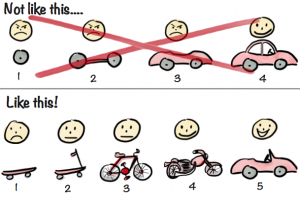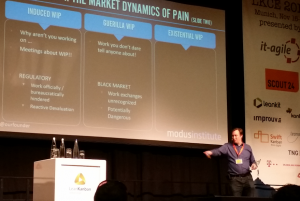Recently I’ve been driving up and down to Nieuwegein a lot more then I did before. That’s about 200 km and although I love listening to music I also found the trip got more and more boring and seemed to last longer each time I had to drive it. Now I’m not one to worry about wasted time that could have spent otherwise on drives like this – I actually embrace the traveltime as relaxing. What did worry me was that especially the second half of the trip I had trouble keeping focus on driving and sometimes even staying awake… (yeah I know.. it’s an age thing).
The solution was as simple as eye… euh ear-opening (for me at least): Podcasts! 
Some of you might go “duh..” by now but for me podcast were something I heard about but never gave much thought to before. Now let me tell you: Podcasts are awesome on long drives!
So far I found 3 differrent ones that I like a lot and listen to regularly now:
- Agile for Humans: great podcast on anything Agile and Agile coaching. “for Humans” so mostly staying away from tools and technical stuff 🙂 Great host and usually excellent guests.
- The Infinite Monky Cage: fun scientific podcast where 2 great hosts and funny briljant guests discus a different scientific topic each episode in an excellent mix of making fun of stuff and learning about it at the same time.
- NOS op 3 tech podcast: Dutch podcast from national radio where a host and varying panel discuss new gadgets, events and tech news. Nothing deep – but quick and fun weekly update for people who want to be nerdy but really aren’t.
Every now and then I throw some other podcast in the mix (I added SPaM cast today in preparation for my trip monday) but the above ones already deserved the “approved by Mike” certificate 🙂



